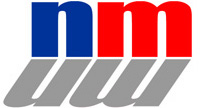

The design and preparation of LEDs exemplifies exquisite control both of chemical composition and materials growth, resulting in devices with tailored electro-optical properties. Techniques like organometallic vapor phase epitaxy (OMVPE, also known as metalorganic chemical vapor deposition, or MOCVD) provide kinetically-controlled growth of semiconductor layers, which can be used to localize and optimize radiative recombination of electrons and holes in the solid. As noted above, the chemical composition of the layers controls their band gap energy and thus the color of light associated with the emitted photons that result from radiative recombination.
The group 13-15 semiconductors (called III-V semiconductors by researchers in the field) comprising the layers of LED dies are produced through co-decomposition of group 13 and group 15 precursor gas molecules. For example, using highly purified gases like trimethyl gallium and arsine, a layer of semiconducting GaAs can be formed by the decomposition of the gases on a heated substrate, according to equation 1.
(CH3)3Ga(g) + AsH3(g) ---> GaAs(s) + 3 CH4(g) (1)
Simple Chemical Vapor Deposition (CVD) is nicely illustrated on a webpage created by Hsin-Tien Chiu.
Such growth techniques permit chemical composition to be altered virtually in an atomically abrupt manner by changes in the concentration and composition of the gaseous precursors. A more general, unbalanced equation for tuning chemical composition is eq 2, where the value of n can be 0, 1, 2, and 3, reflecting the composition of species derived from the trialkyl precursors that are present under growth conditions:
x (CH3)nAl(g) + y (CH3)nGa(g)
+ z (CH3)nIn(g) + PH3(g) --> AlxGayInxP(s)
+ CH4(g) (2)
The product subscripts indicate that these materials form a family of solid
solutions, possessing, in this case, a common cubic zinc blende crystal structure
but variable composition with (x + y + z) = 1. Typically, chemical compositions
that are nearly lattice matched are used so that the atomic layers continue
to grow epitaxially and defects are minimized.
Metal oxide chemical vapor deposition for a blue
diode laser. |
Science Watch in their January/February 2000 issue has information about the Blue Laser Diode and an interview with Shuji Nakamura, the man who produced the first blue LED.
Lumileds has a nice presentation of the improvements in LEDs in recent years.
[Solid Solutions] Back | Forward [Blue LED Circuit]